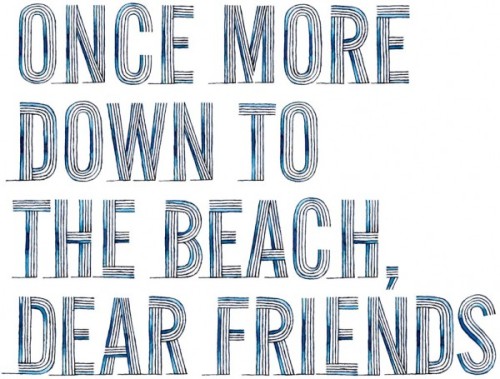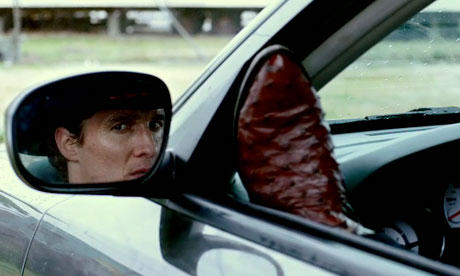Instead, it's been roughly the equivalent of that comedy routine staple of the man running into the brick wall, only to find that it's made of paper, and passing right through it.
I'm loath to say my dogphobia's over, because I may well find myself in an unexpected situation where it emerges, but, well, as far as I can tell, it's over. I haven't had anything resembling a fear of a dog in months, despite running into them reasonably frequently in walking around town and the like. More than that: it's transmuted into not just tolerance but appreciation for and empathy with dogs, which I was neither particularly trying for nor expecting as a side effect.
That's the short version of what's happened. For those curious, a bit about the how.
--------------------------------
As I've previously noted, I'm a deep believer in the current discoveries of neuroscience, which indicate that the brain is not a fixed system but constantly changing, and which can be rewired not just by drugs or electrolysis but through focused, repeated conscious thought. (A neuroscience maxim: "Neurons that fire together, wire together.") I believe we do this - or more pointedly, have it done to us - all the time, unconsciously. So why not take charge and do it yourself?
The method that I principally relied on stems from a technique called cognitive behavioural therapy (CBT). While I didn't discuss this issue with a therapist, it might have helped; nonetheless, I think you can attempt to apply the principles without doing so. Unlike traditional therapy, which is about dredging up your past ad infinitum (and, for those who have asked, I never did dredge up any particular trauma from my past that caused this), CBT is about identifying the thoughts that you have that trigger an emotional reaction, and then consciously supplanting them with a plausible alternative.
So to break it down:
The triggered thought was that a dog of a certain size would jump up, attack, knock me over, and rip my throat out whilst I was falling out of control. (Specific, I know, but when I probed into exactly WHAT I was afraid of happening, it kept coming back to that.)
The plausible alternative was NOT, as many have tried to get me to believe over the years, that all dogs are great, or that "there are no bad dogs, only bad owners". The former is eminently falsifiable with five seconds on Google, while the latter doesn't really change anything but my view on the fact that the dog that could be ripping out my throat might have had a bad owner, and is only helpful to the extent that I know the owner.
So the ACTUAL plausible alternative thought was this: "if a dog would be likely to attack me and rip its throat out, it would be sufficiently unsafe that it would probably be put down, so this dog in front of me is, more likely than not, not going to do that".
Which sounds verbose, and in actual practice it quickly became a subverbal thought that summarizes that - almost thinking "replacement, safe" as a synecdoche for the whole sentence as I physically calmed myself (which in turn initially developed as a corrective to my instinctual flight response - unexpectedly, it may have resulted in me finding dogs not just non-threatening but actually calming along the way). It's hard to explain, but, well, it worked.
A few things helped along the way. One friend suggested reading a book called INSIDE OF A DOG by Alexandra Horowitz about dog behaviour. Although it wasn't meant for me (the preface starts with a sentence along the lines of "So you've loved dogs all your life, and I bet you've wondered about their crazy idiosyncracies!" - um, wrong), it did give me a bit more insight into them, particularly the value of scent, and that their curiosity is borne of that. So now I offer my hand to dogs (in fist form, which I'm told is better), and they smell it.
Another thing was talking about dogs with other friends who, it turned out, had been attacked by dogs, in some cases viciously. Whilst it might seem counterintuitive, it put my phobia into perspective - these people had actually been through much worse, and overcome it successfully, so what I had to deal with was relatively minor.
The day that I recognized a turning point was meeting my friend Peter's dog, a dog I had feared to the point of avoidance. I remembered her being a reasonably large dog, aggressive, and, well, a dog to be feared.
Sofi was not a dog to be feared by any reasonable person. Sofi is a whippet blend who basically acts like a cat. Fifteen minutes after coming over, Sofi was curled up next to me on the couch. The only thing that keeps me from saying that Sofi is impossible to fear is the fact that I HAD feared her.
It's been a couple months since then. I've gone from crossing the road to avoid dogs to deliberately staying on the same side, not so that I can overcome my fear, but because I want to meet them. The other day, there was a reasonably sized, glorious dog owned by some people in front of me, and I tried to catch up, but they were too far, and I watched as they entered the park, let the dog off its leash, and it ran, a figure of beauty.
By coincidence, the dog and its owners wound up at my cafe. Turns out it's a Weimaraner. Of a size that, while not massive, could easily knock me over and rip out my throat if running at full tilt.
I want one. I've been looking at Weimaraner puppies on TradeMe.
I can't actually own a dog right now at this point in my life, for lots of reasons, but the fact that I'm doing this, at some level, makes me feel almost unrecognizable to myself.
-----------------------------
Which is, to me, the most emboldening thing about this whole experiment. That I don't have a tedious crippling fear of dogs is nice. But if that's a part of me that I've carried for most of my conscious life as "me", and it's gone now, what else is contingent? What other personality characteristics and behaviours that I don't like about myself, or that give me problems, can I get rid of, cast by the wayside?
I'm not sure yet, but I look forward to finding out. And if you have anything in your life that you don't like and want to change, hopefully you can find some small gram of inspiration and motivation for positive action from this.
-----------------------------
For further reading:
THE BRAIN THAT CHANGES ITSELF, by Norman Doidge, is a good introduction to the frontiers of neuroplasticity, and first awoke the notion in me that if stroke victims could rewire their brain to walk again, that smaller-scale change should be much more easily achievable.
TEACH YOURSELF COGNITIVE BEHAVIOURAL THERAPY, by Christine Wilding and Aileen Milne, is a book I haven't read in full, but is a great resource for anyone interested either in understanding CBT or putting it into practice in their life.
In my attempt to devour all the neuroscience reading in the library, I am currently reading TRAIN YOUR BRAIN TO GET HAPPY, by Teresa Aubele, Stan Wenck, and Susan Reynolds. It's a self-helpy text that provides many of the current ideas of not just neuroplasticity but plasticity of the self in complete layman's terms, as well as providing bite-size summaries of CBT and other methods for changing unhealthy mental patterns.
Finally, I should note that I don't view CBT as a cure-all for all mental health issues, and certainly not the half-assed self-administered version that I did. In some cases, medication may well be appropriate; in others, a professional can provide the distance that you may be unable to provide yourself. But, from my experience, I do think its potential everyday value is underknown and underutilized.







